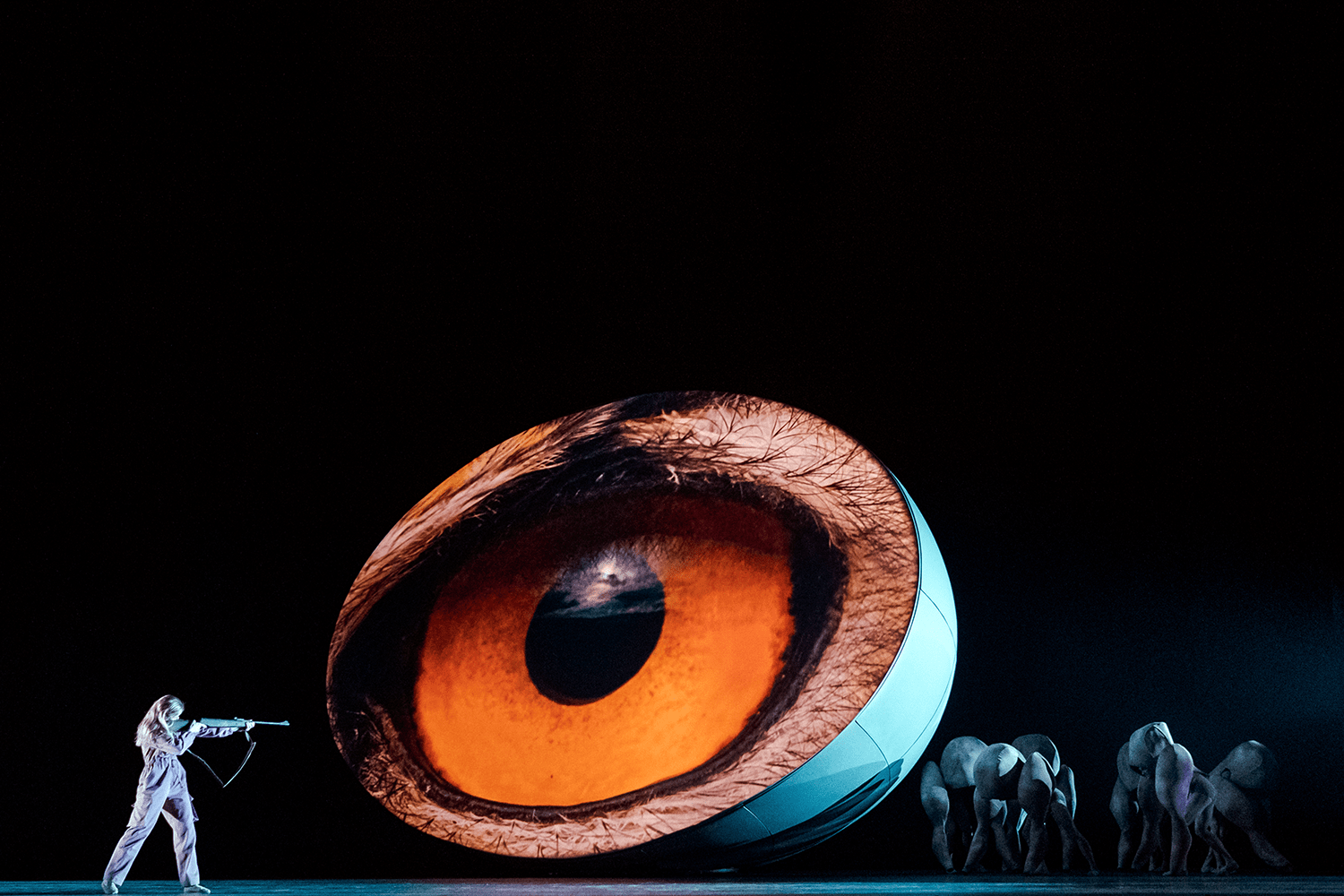Adapting ballets out of plot-heavy novels set in fantasy locations and populated with multiple characters is a rubbish idea. The profound truth of such a proposal is forcefully borne out by the wretched muddle of Wayne McGregor’s MaddAddam, an over-inflated farrago drawn from a triptych of visionary fictions by Margaret Atwood.
McGregor – hugely talented and energetic as he is – needs to calm down and slow down and think small
Where to start? Apocalyptic themes – political, environmental and ‘societal’ – are evoked in images and spoken narration without McGregor having any means in his hyperactive choreographic vocabulary to translate them meaningfully into dance. Only those who are already au fait with Atwood’s extremely complex and wilfully ambiguous narratives will be able to penetrate, let alone navigate, what the hell is going on.
The first act takes place in the aftermath of a pandemic in which a figure known as the Snowman leads a posse of engineered hominids out into a depopulated world. The second act moves back and forth chronologically, focusing on an ‘eco-pacifist’ sect called God’s Gardeners who float about benignly in white underwear. The third act, set ‘some generations after the Waterless Flood’, shows the hominids crossed with humans, a new race, very agitated about something unspecific.
If this sounds intriguing, I can only say that it represents the very maximum of sense that I could draw out of the extended synopsis in the programme – I haven’t a clue where Blanco or Blackbeard or the Painballers or Pigoons fit in – and that’s because McGregor has everyone moving in the same idiom, with contortions made up of violent stretching and pelvic jerking. The result is that it’s impossible to work out whose side one is meant to be on, or indeed what emotion anyone is feeling. Dance is wonderfully and bottomlessly expressive, of course, but it cannot bear the weight that this scenario dumps on it.
Trying to find something nice to say, I would admit that the quality of some wonderful dancers – Fumi Kaneko, Melissa Hamilton, Joseph Sissens, and Marco Masciari among them – briefly shines through the mess. Gareth Pugh has designed some super-stylish costumes and the sets, lighting and video are all highly sophisticated. But I can’t find anything good in Max Richter’s score: it’s bombastic and banal, a noisome vacuum.
God knows how much the staging (co-commissioned with the National Ballet of Canada) must have cost the cash-strapped Royal Ballet, and I can’t see it returning dividends by establishing itself in the repertory. McGregor – hugely talented and energetic as he is – needs to calm down and slow down and think small (his more modest pieces such as Obsidian Tear and Yugen are often of great merit). With MaddAddam he has tried to do too much: the result is a spectacular failure.
There were few things I felt less inclined to do on the night after Trump’s victory than schlep over to Sadler’s Wells to revisit Pina Bausch’s The Rite of Spring, an interpretation of Stravinsky’s tumultuous score that has developed classic status since it was first seen in 1975. I have the temerity to find Bausch’s concept overrated – too much frenetic running around, a crudely reductive idea of the primitive – but a company of black African dancers from the École des Sables in Senegal flung themselves at it with unstinting and impressive zeal: they clearly believed in it, even if I didn’t.
Before that, something very different. Two chaste elderly ladies in long back shifts, Germaine Acogny (founder of École des Sables) and Malou Airaudo, review the course of a long friendship in a meandering reverie. As they gently dance a mimed conversation, they exchange memories, laugh at absurdities, gaze at the sky and serenely contemplate the proximity of death, their mutual affection emerging slowly through spare gestures of simple grace. With a duration of 20 or so minutes, it makes for a charming and touching pastorale, albeit one that leaves little after-taste.








Comments